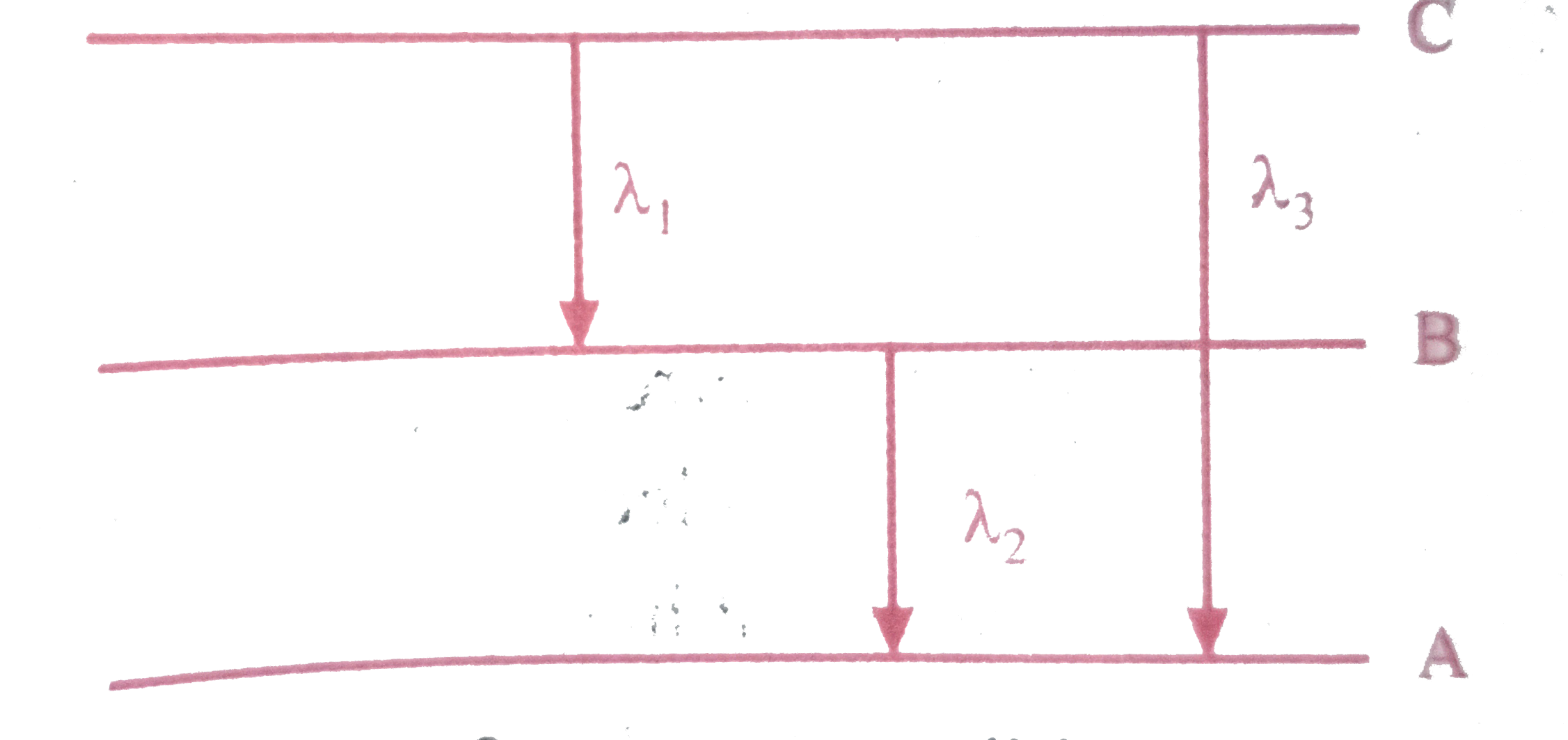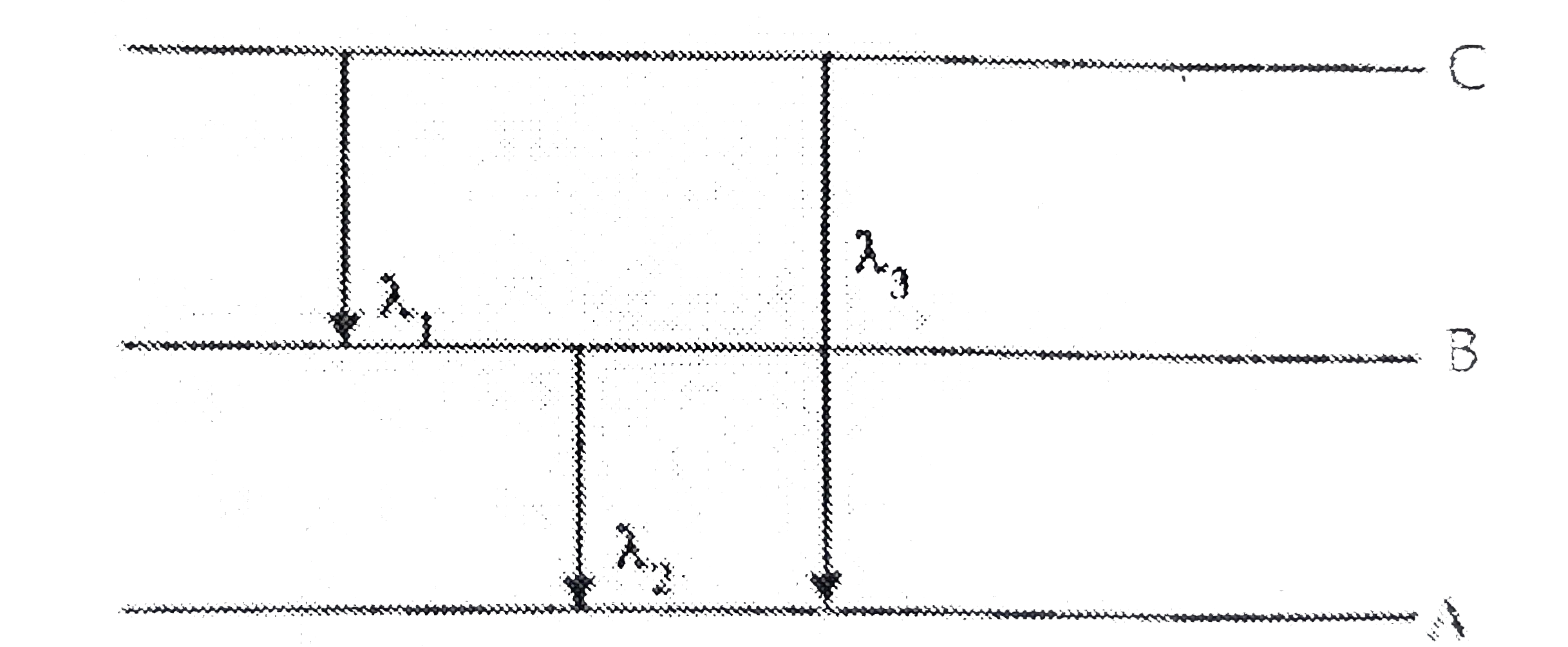Find the relation between the three wavelength λ1 λ2 and λ3 from the energy level diagram shown below: 
By Bohr.s frequency condition
EC−EB=hcλ1
EB−EA=hcλ2
EC−EA=hcλ3
Now,
EC−EA=EC−EA+EB−EB
=(EC−EB)+(EB−EA)
frac(hc)(lambda_(1))=frac(hc)(lambda_(2))+frac(hc)(lambda_(3))<br>Rightarrow frac(1)(lambda_(3))=frac(1)(lambda_(1))+frac(1)(lambda_(2))
Similar Questions
(i) State Bohr's quantisation condition for defining stationary orbits. How does de-Broglie hypothesis explain the stationary orbits ?
(ii) Find the relation between the three wavelengths, λ1,λ2 and λ3 from the energy level diagram shown here.
View Solution(i) State Bohr's quantization condition for defining stationary orbits . How does de- Broglie hypothesis explain the stationary orbits ?
(ii) find the relation beween the three wavelengths
λ1,λ2 and λ3 from the energy level diagram shown :

View Solution
Knowledge Check
If λ1,λ2,λ3 are the wavelengths of the waves giving resonance in the fundamental, first and second overtone modes respecively in a open organ pipe, then the ratio of the wavelengths λ1:λ2:λ3, is :
A1:2:3B1:3:5C1:1/2:1/3D1:1/3:1/5A dye absorbs a photon of wavelength λ and re− emits the same energy into two phorons of wavelengths λ1 and λ2 respectively. The wavelength λ is related with λ1 and λ2 as :
Aλ=λ1+λ2λ1λ2Bλ=λ1λ2λ1+λ2Cλ=λ21λ22λ1+λ2Dλ=λ1λ2(λ1+λ2)2
(i) State Bohr's quantization condition for defining stationary orbits . How does de- Broglie hypothesis explain the stationary orbits ?
(ii) find the relation beween the three wavelengths
λ1,λ2 and λ3 from the energy level diagram shown :

View SolutionFind the relation between the three wavelengths λ1,λ2andλ3 from the energy level diagram shown below.

View SolutionAn electron, a doubly ionized helium ion (He++) and a proton are having the same kinetic energy . The relation between their respectively de-Broglie wavelengths λe,λHe++ and λp is :
View SolutionAn electron, a doubly ionized helium ion (He++) and a proton are having the same kinetic energy . The relation between their respectively de-Broglie wavelengths λe,λHe++ and λp is :
View SolutionFor the given transitions of electron, obtain the relation between λ1,λ2&λ3.
View SolutionA dye absorbs a photon of wavelength λ and re− emits the same energy into two phorons of wavelengths λ1 and λ2 respectively. The wavelength λ is related with λ1 and λ2 as :
View Solution
